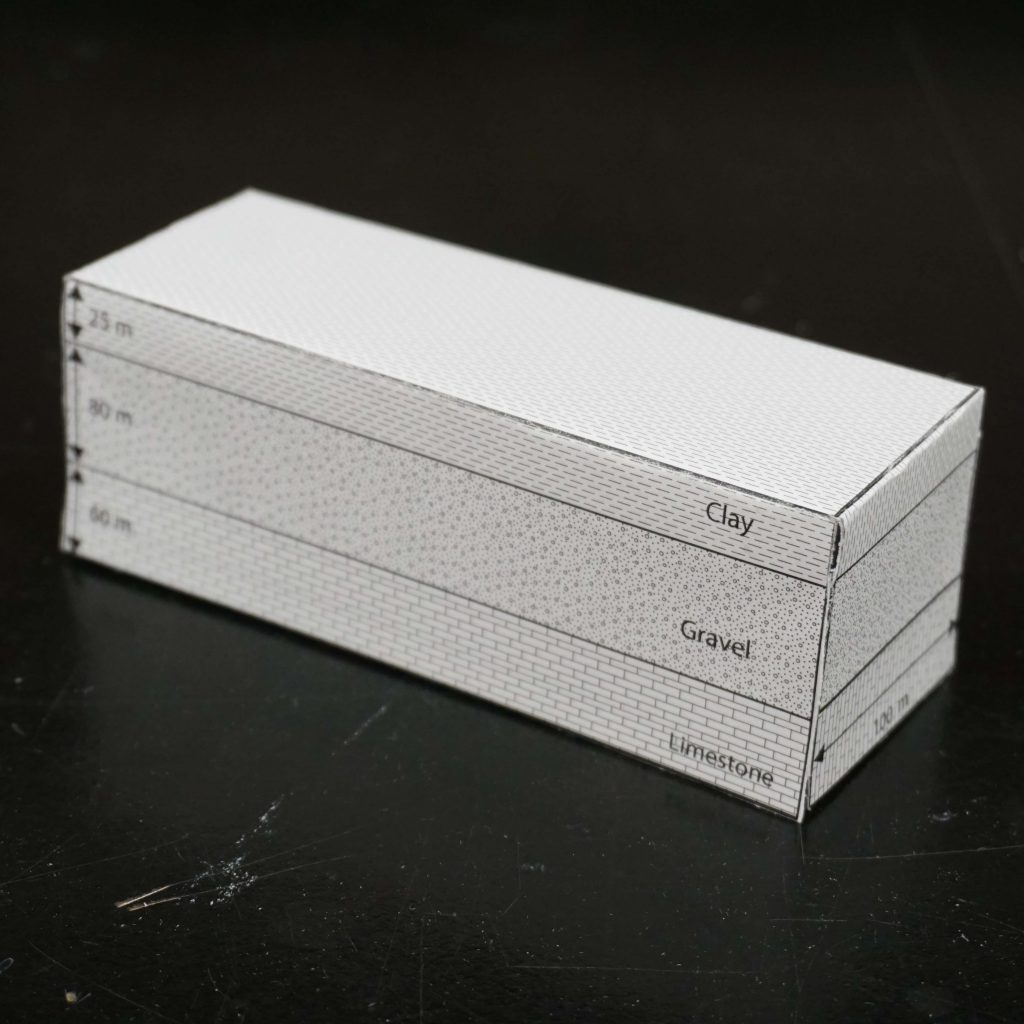
The goal of these paper aquifer models is to enable the user to easily visualize the three dimensional nature of groundwater related problems. For many problems it is helpful to have a physical model that one can hold in order to better understand the problems being asked. The hope is that these paper aquifer models will clarify concepts in groundwater science. This brings up a relevant quote by statistician George Box:
“Essentially, all models are wrong, but some are useful” – Box
The hope here is that these models will be useful in understanding groundwater flow in three dimensions.
Each of the paper aquifers in this set of examples will need to be constructed by the user and are sized to be printed on a standard sheet of paper. After printing the aquifer it is necessary to cut along the outer most edge of the model. Then fold each of the outer panels along the solid lines. This should form a three dimensional box or polygon. The example show below will result in a rectangular box. Each model has tabs or wings on the outer edge, which are meant to have glue or tape applied to help hold the model together. A representation of one of these models is show below along with a link to download a PDF version to experiment with.

Each paper model has a specific lithology (geologic layering) which for future calculation will have an associated hydraulic conductivity. As a reminder, hydraulic conductivity is simply a measure of the resistance to flow of water in a rock (it is a lot like resistance to the flow of electrical current in a circuit). The paper model also has lines with arrows showing the length, width, and height of the lithologic layers. At times and for specific problems there will be the need to apply a vertical exaggeration to these models. Pay special attention to the stated dimensions of these models because they will have to change from one problem to the next.
I would encourage the user to give this example model a try. It is a quick model to construct and it will provide some experience as to how to construct future models in this project.
Side note: It should be stated that these are models and models are not perfect. There will be times in working some of the upcoming problems where the user will need to use a bit more of their imagination to fully visualize the problem.

This work is licensed under a Creative Commons Attribution-NonCommercial 4.0 International License.
